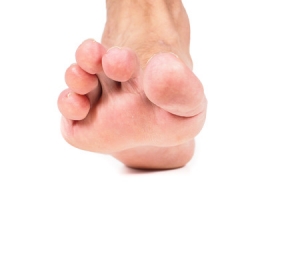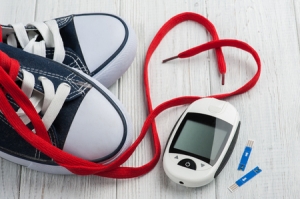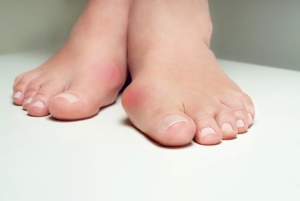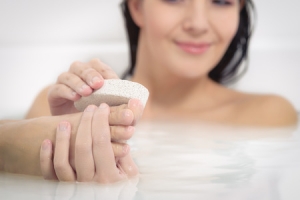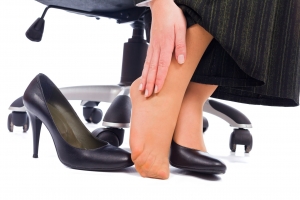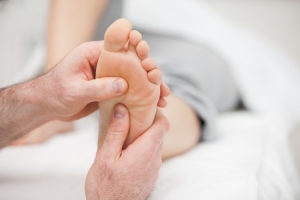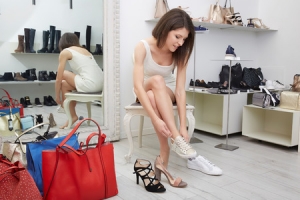Connect With Us
Blogs
Displaying items by tag: hammertoes
Healthy Foot Habits for the New Year
January is a time for making a fresh start and resolving to make positive changes. At Superior Foot & Ankle Care, we’d like to encourage our Los Angeles County patients to take some steps to ensure healthier feet and ankles in 2021. Below are some easy tips to implement:
- Commit to a Basic Hygiene Regimen—Did you know that simply washing your feet daily with soap and water and drying them thoroughly can significantly reduce your risk of fungal infections? If you add a dusting of a foot or fungal powder in the morning and a rich moisturizer at night before bed, you’ve got a fast and effective foot care plan.
- Check Your Feet for Changes—It’s easy enough while you’re cleaning your feet to look them over for any symptoms that may signal a developing problem. Check for toes that appear to be moving out of place, bruises, swelling, wounds that are slow to heal, discoloration of skin or nails, and any growths or lumps. If you notice something concerning, contact our Long Beach office by calling: (562) 420-9800 to make an appointment with our podiatrists, Victoria M. Foley and Dr. Constance Ornelas, to examine your feet and diagnose any problems.
- Keep Up with Nail Care—Trim toenails regularly and file any rough edges to prevent them from getting caught and tearing. Always cut nails straight across and be careful not to make them too short or they will be in danger of becoming ingrown.
- Choose Shoes Wisely—One of the single biggest steps you can take to prevent many common foot disorders is wearing good shoes. Look for styles that are made of soft, flexible material and have roomy toe boxes. Good arch support and a cushioned insole are also important. Limit time spent in high heels as these can harm your feet and cause bunions, hammertoes, and other deformities.
- Make Healthy Lifestyle Choices—Regular exercise, a healthy diet, and getting enough sleep all impact the condition of your feet as well as the rest of your body. Don’t try to change everything at once. Small changes that you can sustain will have big payoffs in the New Year!
If you have questions about the care of your feet, don’t hesitate to contact us.
Fall Shoes Bring Bunion and Hammertoe Discomfort
At Superior Foot & Ankle Care Center, we often find that more women are making appointments at our Long Beach office in Douglas Park, CA the fall with complaints about their bunions and hammertoes. These are both deformities of the toes that can seem more painful than ever when patients switch from the open shoe styles of summer to closed toe shoes in the fall.
A bunion occurs when the big toe joint begins to move out of place and the big toe drifts toward the second toe. As the dislocation of the joint progresses, the telltale bump forms on the side of the toe. In the case of hammertoe, the second, third, or fourth toe begins to bend at the middle joint creating the hammer-like position of the toe and hence the name. Although these two conditions are different in appearance, they are both toe deformities and have several things in common.
The Shoe Factor
Bunions and hammertoes are both biomechanical problems that can be caused by an inherited tendency for the deformity, or a number of other risk factors, such as arthritis or a previous injury. Both conditions, however, can be made worse by wearing shoes that are too tight and narrow in the toe box. High-heeled shoes and boots can also exacerbate these conditions because they force feet forward and exert extra pressure on the toes.
What to Do
If you are experiencing increased discomfort from either a hammertoe or a bunion, make an appointment with our podiatrists, Dr. Victoria M. Foley or Dr. Constance Ornelas, so they can evaluate your toes and see how far the condition has progressed. The foot doctor will determine if surgery is needed to correct the problem or if you can get by at this point with conservative measures. These may include:
- Icing the toe
- Anti-inflammatory medications
- Shoe modifications or a custom orthotic
- Stretching exercises or physical therapy
Don’t wait. If you are in pain, contact us today and let us help you get relief.
6 Tips for Protecting Your Feet with Diabetes
At Superior Foot & Ankle Care Center, we know that diabetes can affect your skin, joints, and bones in a number of ways. Two conditions associated with the disease—peripheral arterial disease (PAD) and neuropathy—are of particular concern when it comes to your lower extremities. PAD is a narrowing or blocking of the arteries to your legs, which can lead to poor circulation. This means that nutrient and oxygen-rich blood necessary for healing cannot reach your legs, feet, and toes as quickly as needed. Neuropathy is nerve damage that can result in loss of feeling in your feet, which makes it difficult to perceive pain and injury. This double whammy means that patients with diabetes are at a higher risk for a host of podiatric problems, including:
- Ulcers and wounds that do not heal properly
- Fungal infections
- Hammertoes
- Ingrown toenails
- Corns and calluses
Difficulty healing can cause even minor foot and toe problems to become major threats with the potential for infection and even amputation. Below are some ways you can be proactive in preventing foot problems if you have diabetes:
- Control your blood sugar. Follow all your doctor’s instructions for managing your diabetes. Watch your diet, take your medications as directed and regularly test to make sure you are on track.
- Schedule regular podiatric checkups. Our podiatrists, Victoria M. Foley or Dr. Constance Ornelas, will work with you to prevent potentially dangerous foot issues. Seeing the foot doctor regularly will increase the chances of catching injuries and infections in their very early and most treatable stages. The podiatrist can also help with nail care, wound debridement and diabetic footwear and orthotics.
- Keep feet clean, warm, and dry. Wash daily and dry thoroughly—especially between your toes. Use a foot powder before putting on socks.
- Make sure shoes fit correctly. Avoid styles that have narrow toe boxes are that are made of very stiff materials. Keep the heel height to 2 inches or less.
- Don’t walk barefoot. This dramatically increases your chances of getting athlete’s foot or a fungal toenail infection, which are contracted by direct contact. You are also more likely to step on a sharp object and injure your foot without shoes.
- Conduct regular self-exams—it’s important that between appointments you are checking your feet and toes daily for any signs of rashes, cuts, blisters, bruises, growths or other indicators that a foot problem is developing. If you can’t see your whole foot as a family member or caregiver to assist you. Contact our Long Beach office immediately by calling (562) 420-9800 if you find anything concerning.
What’s Behind Bunions?
At first, a bunion may appear very subtle. You may look down and notice your big toe seems to be leaning slightly toward the second toe. At Superior Foot & Ankle Care Center, we find many patients are unfamiliar with how bunions develop and therefore may not come in promptly to get them evaluated.
Know Your Risk Factors
Most often, bunions are caused by a biomechanical defect in your feet. This may be a neuromuscular problem, flat feet or overpronation. In many instances, this fault in the mechanics of your feet may be inherited. There are other factors, however, that can also increase your risk of developing a bunion, including:
- Wearing tight-fitting shoes with pointy or narrow toe boxes
- Spending long periods of time in high-heeled shoes or boots
- A previous foot injury
- Congenital defect
- Repetitive stress to the foot
- Arthritis
Seek Treatment Early
In its early stages, a bunion may not cause you any pain or discomfort. However, bunions are a progressive disorder. As time goes on, the big toe joint will move further and further out of place until it begins to cause pain when you walk. It will also become increasingly difficult to wear shoes due to the pressure exerted on the bunion by your footwear. The toe can eventually become rigid in the defective position and cause other deformities such as hammertoes to occur. It’s essential that you make an appointment at our Long Beach office so that our podiatrists, Dr. Victoria M. Foley or Dr. Constance Ornelas can examine your foot. Fortunately, there are many treatment options available which can slow the progression of the bunion and prevent foot pain and discomfort. These include:
- Altering your activities to avoid motion that exerts adverse pressure on the bunion
- Using a custom orthotic to correct the biomechanical problem and increase stability
- Exercises to increase joint mobility
- Night splints to realign the joint
If you think you have a bunion forming, don’t wait. Contact us today for an appointment by calling: (562) 420-9800.
Resolve to Get in Shape—Safely
Is starting a new fitness plan one of your New Year’s resolutions? At Superior Foot & Ankle Care Center we applaud this initiative, but also add a word of caution. We see too many patients who fail to take the necessary steps to ensure that their new fitness plan is safe. Prevent injuries and get your healthy resolution off to a smart start by taking into consideration the following.
Your Current Condition—do you suffer from any chronic foot or ankle disorders such as flat feet, plantar fasciitis or hammertoes? Our podiatrists, Dr. Victoria Foley or Dr. Constance Ornelas, can help you determine the best type of exercise and footwear to accommodate an existing podiatric condition. In some cases, special padding or even a custom orthotic device may be prescribed to make exercise more comfortable.
Long-term Goals—in order to determine the type of exercise to do, you need to know what your goals are. Do you want to lose weight? Have more strength and endurance? Improve flexibility and balance? Your general physician and exercise professionals can help match your goals to fitness activities and sports that will best achieve them.
Gear—in our opinion, your footwear is the most important piece of equipment for a new fitness program. Be sure that you get the right shoes for your sport and that they fit properly. If the foot doctor has recommended an orthotic, be sure it fits in your sports shoes. Look for socks that are not too bulky and ones that wick moisture away from your skin to prevent athlete’s foot and fungal infections.
Now you’re ready to begin. Start slow and gradually increase the degree of difficulty of your work out. If your feet or ankles hurt from your new exercise plan, contact our Long Beach office for an appointment by calling: (562) 420-9800.
Free Your Feet from Shoes that Hurt
Freedom is a word frequently associated with Independence Day and here at Superior Foot & Ankle Care Center, it’s also a reminder that many patients are wearing shoes that too small for their feet. Improperly fitting shoes is one of the top causes of foot pain and can lead to chronic foot disorders such as plantar fasciitis and fallen arches. Follow the tips below on your next shoe shopping trip to ensure a good fit:
- Don’t buy shoes without trying them on. Even if you think you know your size, fit can vary based on the manufacturer and the shoe style.
- Get your foot professionally measured. There are two good reasons for this. First, most people have two different sized feet. You’ll want to buy shoes to fit the bigger foot. Also, your shoe size may increase as you get older or if you’ve recently given birth.
- Shop at the end of the day. Your feet are at their largest and most swollen after you’ve been on them all day. A common foot shopping faux pas is buying shoes early in the day and then finding when you wear them that you can’t wait to take them off at the end of the day because they make your feet hurt.
- Focus on the toes. Many common toe problems such as bunions, hammertoes, ingrown toenails, and corns are made worse by shoes that have narrow toe boxes. High heels can also force toes into a cramped position. You should be able to wiggle all your toes freely in a properly fitting pair of shoes and there should be at least a half an inch of space between your longest toe and the front of the shoe.
- Avoid styles that are completely flat with no arch support. In addition, if the foot doctor has prescribed an orthotic device, bring it with you and try on with the shoes you are considering.
- Try on both shoes and take your time walking around the store to make sure they are comfortable. When you take the shoes off, check for red marks on your feet which may indicate friction or rubbing from the shoe.
If you are experiencing chronic foot aches and pains, schedule an appointment at our Long Beach office by calling: (562) 420-9800. Our podiatrists, Dr. Victoria Foley or Dr. Constance Omelas will evaluate your feet and determine whether it’s your shoes or another problem that is causing your discomfort.
5 Ways to Take Better Care of Your Feet
At Superior Foot & Ankle Care Center we believe in being proactive when it comes to the health of your feet. In honor of Foot Health Awareness Month, we’d like to offer the following tips for taking care of your feet:
- Wear shoes that fit. This is one of, if not the single biggest steps you can take to prevent foot and ankle injuries and disorders. Some studies have shown that up to 90% of people are wearing shoes that are the wrong size! Shoes that are too narrow or tight in the toe box can encourage deformities such as bunions and hammertoes as well as increase the risk of ingrown toenails and fungal infections. Get your foot professionally measured at the shoe store. Shoe size can change as you age and during pregnancy.
- Get in the habit of doing self-exams on your feet. Changes in the skin or nails of your feet, as well as shape, size or color, can all be indicators of potential foot problems. Any differences in sensation (burning, numbness, tingling), swelling or abnormal growths should be reported to our podiatrists, Dr. Victoria Foley and Dr. Constance Omelas promptly. Early detection of a foot problem can mean a better outcome and less invasive treatment.
- Limit time going barefoot. Bare feet in public places are at a higher risk for coming in direct contact with fungi and bacteria that cause infections such as athlete’s foot and fungal toenails. Even at home, however, going barefoot increases your risk of puncture wounds and injuries.
- Don’t neglect foot hygiene. Basic daily care of your feet should include washing with soap and water (and drying completely) as well as applying foot powder or moisturizing lotion, depending on your individual needs. Don’t wear socks more than one day and alternate our shoe choice as well.
- Live a Healthy Lifestyle. You may not think about it but maintaining a healthy weight, exercising and getting regular checkups all contribute to the health and well being of your feet. Be sure that you monitor chronic diseases such as diabetes and arthritis and follow your physicians’ instructions for keeping this conditions under control.
If you have questions about how to best care for your feet, contact our Long Beach office by calling: (562) 420-9800.
Shoe Choice Affects Foot Health for Women
At Superior Foot & Ankle Care Center we treat many women with foot problems that could have been avoided by choosing different shoes. Today, there are many attractive shoe designs that do not harm your feet. Short-term fashion choices can lead to long term foot health problems. Below are 3 types of shoes to avoid:
- High heels—shoes with high heels (2 inches or more) can cause a host of foot problems. First, the height of the heel can cause wobbling and instability which results in ankle sprains. High heels put extra strain on the muscles and ligaments of the ankle as they struggle to keep your foot in proper position. Continuing to wear high heels after a sprain is likely to set up a dangerous cycle of repeated sprains, increased weakness and eventually chronic ankle instability and pain. In addition, the design of high heels forces your toes forward, causing them to spend long hours cramped and squeezed. This increases the risk of bunions, hammertoes and other toe deformities.
- Stiff backed pumps—shoes with an overly hard heel counter can lead to a condition commonly referred to as “pump bump.” Officially known as Haglund’s deformity, a hard, bony enlargement forms on the back of the heel. When the back of pump rubs against the growth it causes irritation and inflammation. In some cases the bursa sac surrounding the deformity can become inflamed causing bursitis.
- Flip-flops—yes, these are comfortable and oh-so-easy to slip on and off but flip flops provide no support whatsoever for your feet. This increases the risk of your feet coming out of the shoe and getting cut or scraped and also the chances of twisting an ankle. The one exception to this is in gyms, public pools, spas and other places where covering your feet prevents contact with fungi and bacteria that can cause athlete’s foot, fungal toenail and
If a part of your foot, toe or ankle is causing you pain or you notice other symptoms such as bruising, swelling or redness, contact our Long Beach office for an appointment by calling: 562-420-9800. Our podiatrists, Dr. Victoria Foley and Dr. Constance Omelas will examine your feet and prescribe the correct treatment (in addition to changing your shoes) to relieve pain and prevent further injury.
Why Does My Toe Hurt?
Most of the time we don’t think much about our toes. They are, however, quite necessary for providing the balance and assistance needed to support the weight of your body and for common activities like walking and running. At Superior Foot & Ankle Care Center we find patients pay attention to their toes when they hurt and stop functioning as they should. Below are some common reasons for toe discomfort:
Hammertoes—with this condition, which can be caused by a genetic muscle problem, faulty foot mechanics or an abnormal bone length, one or more toes curls downward causing the namesake “hammer” appearance. In the early stages, the toes remain flexible but if left untreated they will become rigid, unable to be straightened. Corns, calluses and more severe disability can occur. There are a number of conservative and surgical treatment options available depending on the severity and progression of hammertoes.
Toe Spurs—this is a bone spur that occurs in your toe. It may form as part of another foot problem and can cause quite a bit of pain when walking. Usually a minimal incision surgery is needed to eliminate the spur.
Curled Fifth Toe—usually an inherited condition, the pinky toe curls downward and moves under the next toe. This results in your bearing weight on the side of your toe instead of the bottom—ouch! In addition, curled fifth toes cause nail problems and corns. This problem can be surgically corrected.
Turf Toe—this is actually a sprain of the joint at the base of the big toe. It is usually caused by a sudden pushing off injury or a “jamming” of the toe, such as when a player’s foot gets stopped on artificial turf but the rest of the body continues moving forward. Turf toe can also be caused or exacerbated by repetitive pushing off actions common to sports such as football.
As you can see, the causes of toe trouble are varied and the treatment will depend on the diagnosis. For this reason it’s essential that you let one of our podiatrists, Dr. Victoria Foley and Dr. Constance Omelas, examine your toes and find out the cause of your pain. To get relief from your toe pain contact our Long Beach office sooner rather than later for an appointment by calling: 562-420-9800.
Show Your Feet Some Lovin’ With Shoes That Fit
Did you know that August 17th is National I Love My Feet Day? At Superior Foot & Ankle Center we can think of no better way to tell your feet you care then by buying shoes that fit properly and are good for your feet. Many common foot problems can be avoided by wearing the correct shoes for your feet. Here are some tips on shoe shopping:
- Buy shoes based on quality of construction and materials that are designed for the health of your feet not on fads and appearance.
- Be sure any shoes you choose take current foot problems you have into consideration. At your next checkup with our podiatrists, Dr. Victoria Foley and Dr. Constance Omelas, ask if there are special features you should look for or avoid when buying shoes. In many cases, such as with bunions, hammertoes, flat feet or high arches, the foot doctor can make recommendations about shoe design that will decrease discomfort and help prevent a foot condition from getting worse. In some cases, a custom orthotic device may help shift pressure away from an area that hurts. If the podiatrist prescribes an orthotic be sure to bring it with you to try on with the shoes you are considering buying.
- Get your feet professionally measured. Feet can change size as you age. It’s not uncommon to find that one of your feet is larger than the other. You should always buy shoes to fit the bigger foot. Also, don’t assume once you know your size that you all brands will fit the same. Always try on shoes before purchasing.
- Heel heights of 1 inch or less are best. The higher the heel, the more pressure that is exerted on the forefoot. Avoid pointy shoes and those with narrow toe boxes.
- Shop for shoes at the end of the day. That’s when your feet are their largest and most swollen.
- Run your hand around the inside of both shoes to be sure there is no loose stitching or rough spots that might rub on your skin.
- Don’t rush! Try on both shoes and take some time to walk around the store to make sure that shoes fit well and are comfortable from the moment you leave the store.
If you have questions about other foot health care issues contact our Long Beach office by calling: 562-420-9800.

